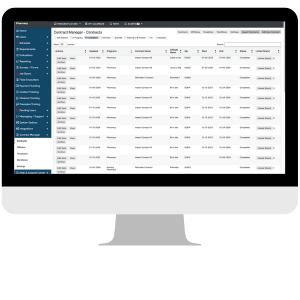Looking to make the change to an automated experiential learning management system? You’re giving yourself and your colleagues critical time back in your days and preparing to elevate both the student experience and the work / life balance of faculty or staff. But making the change isn’t only about the end result. There are several steps that go into managing the change to an automated experiential learning management system that create a smooth transition.
Discover the best practices for managing change when transitioning to a new experiential learning management software, from being flexible with configuration changes to proactively communicating the change.
Involve stakeholders early
Engage key stakeholders, including administrators, faculty, and IT professionals, from the outset of the transition process. Their input is crucial for understanding diverse perspectives and ensuring that the chosen software aligns with the needs of different departments.
Administrators play a crucial role in overseeing the overall implementation and adoption of the new software. Their input can help identify organizational goals, establish timelines, and allocate necessary resources. By involving administrators early on, you can ensure that the chosen software aligns with their vision and strategic objectives.
Faculty members are at the core of the teaching and learning experience. Engaging them in the transition process is essential for understanding their specific needs and expectations. Their input can help shape the functionality and features of the new software to better support their teaching methods and enhance student engagement. Additionally, involving faculty from the outset helps build trust and buy-in, creating a sense of ownership and investment in the new system.
IT professionals possess the technical expertise required for a smooth implementation. Engaging them early on allows you to assess the compatibility of the new software with existing infrastructure and systems. They can provide valuable insights on integration capabilities, data migration, and system requirements.
Conduct a thorough needs assessment
When implementing new experiential learning management software, it is essential to understand the need for change. This may involve assessing the limitations of the current system(s) or manual processes, identifying areas for improvement, and recognizing the benefits that the right automated software can offer. By understanding the need for change, you can effectively communicate the reasons behind the transition to your team and gain their support and buy-in.
Additionally, understanding the need for change allows you to set realistic goals and expectations for the implementation process and beyond. It helps you identify the specific features and functionalities required in the new software to address the challenges and gaps in the current manual system. This understanding serves as a foundation for a successful transition.
Reap the benefits of being open-minded
Being open to changes is crucial when transitioning to a new experiential learning management software. While your team may have meticulously planned the transition process, it's important to remain open-minded and flexible as new and better options may arise during the configuration phase.
Your implementation partner, who has expertise in the software, may suggest alternative paths or configurations that can make certain processes or workflows more efficient. Furthermore, staying open-minded to changes demonstrates a willingness to adapt and evolve. It shows that you prioritize finding the best solutions for your organization and are willing to explore different approaches. This mindset fosters a collaborative environment where ideas can be shared and implemented, ultimately leading to a more successful transition.
Pilot programs for testing
Consider implementing pilot programs with a select group of users to provide valuable insights into the real-world application of the software. By conducting these pilot programs, you can gather feedback, identify any potential challenges, and make the necessary adjustments before fully onboarding all of your users or cohorts. This proactive approach ensures a smoother transition and allows for a more seamless integration of the new experiential learning management software.
Customization and scalability
Choose software that is customizable to meet the specific needs of your institution. Ensure that the selected solution is scalable to accommodate future growth and evolving requirements.
Ask questions about how the software provider has helped programs similar to yours. Does the provider have examples of solving challenges when it comes to configurability and scalability? What features will help you during program growth or simply taking on new cohorts?
Evaluate integration capabilities
Assess the integration capabilities of the new software with existing systems and tools. Seamless integration reduces redundancies and enhances overall efficiency across different departments.
For example, can data be easily transferred between systems without the need for manual input or duplicate entries? This will not only save time and effort but also reduce the risk of errors or inconsistencies in data.
If the new software can integrate with your existing student information system, you can automatically sync student data, course schedules, and grades, eliminating the need for manual data entry or updates. This not only saves time but also ensures that information is always up to date and accurate.
Proactively communicate the change
One of the best practices for managing change is proactively communicating the change to all stakeholders involved. This includes employees, students, instructors, and any other parties affected by the transition to the new experiential learning management software.
Proactive communication helps manage expectations, address concerns, and ensure a smooth transition. It is important to clearly articulate the benefits of the new software, provide training and support resources, and establish channels for feedback and assistance. By keeping all stakeholders informed and engaged throughout the process, you can foster a positive attitude towards the change and minimize resistance or confusion.
For more information on what the implementation process looks like with CORE's experiential learning management system, check out this blog post, "Unlocking success: Implementing CORE software in Higher Education programs."
CORE Higher Education Group
Author




